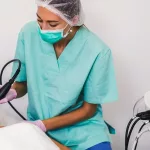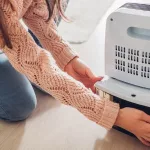Got a new prescription for Ohtuvayre and wondering what kind of side‑effects might show up? You’re not alone—many people feel a mix of curiosity and concern when they start a COPD medication. The good news is that most reactions are mild and manageable, and even the serious ones are rare and well‑documented. Below we’ll walk through exactly what to expect, how to keep the bumps in the road smooth, and when it’s time to call your doctor.
What Is Ohtuvayre
Ohtuvayre (generic name ensifentrine) is an inhaled, steroid‑free suspension used as a maintenance treatment for chronic obstructive pulmonary disease (COPD). It works by inhibiting two enzymes—PDE‑3 and PDE‑4—so it relaxes airway muscles and reduces inflammation at the same time. Think of it as a two‑in‑one air‑conditioning system for your lungs.
The standard Ohtuvayre dosage is 3 mg (one unit‑dose ampule) taken twice a day via a standard jet nebulizer. The medication is not a rescue inhaler; it won’t instantly relieve a sudden flare‑up, but it helps keep those flare‑ups from happening in the first place.
Common Side Effects
Clinical trials and real‑world data line up on a handful of side effects that show up in ≥ 1 % of users—these are the ones you’ll most likely hear about.
| Side Effect | Approx. % of Users | Quick‑Care Tip |
|---|---|---|
| Back pain | 1.8 % | Gentle stretching, OTC ibuprofen if approved by your doctor. |
| High blood pressure (hypertension) | 1.7 % | Monitor at home, reduce sodium, discuss dose adjustment. |
| Urinary tract infection (UTI) | 1.3 % | Stay hydrated, report burning or urgency promptly. |
| Diarrhea | 1.0 % | BRAT diet, plenty of fluids, consider probiotic. |
These numbers come from the most common Ohtuvayre side effects table on Drugs.com. While they sound a bit intimidating, remember that “most common” still means roughly 98 % of patients don’t experience them at all.
Serious Side Effects
Even though they’re rare, it’s important to know the signs that demand immediate medical attention.
- Paradoxical bronchospasm – sudden tightening of the airways right after inhaling. If you feel wheezing worse than usual within minutes, stop the inhalation and call 911.
- Sudden breathing problems – any abrupt shortness of breath that feels out of the ordinary should be treated as an emergency.
- Psychiatric events – insomnia, anxiety, depression, or thoughts of self‑harm have been reported in less than 0.1 % of users. If mood changes creep in, reach out to your healthcare team right away.
- Eye or heart issues – blurry vision, rapid heartbeats, or dizziness are also flagged as serious, though they’re extremely uncommon.
According to the Ohtuvayre safety profile, discontinuation due to adverse reactions was only 7.6 %—about the same as placebo—so the medicine is generally well‑tolerated.
Managing Side Effects
Now that you know what to look out for, let’s talk about how to keep those side effects from ruining your day.
Back Pain Relief
Back pain can sneak up on you, especially after a nebulizer session. Take a few minutes to do cat‑cow stretches, and consider a warm compress after you finish your dose. If the ache sticks around, ask your pharmacist whether an over‑the‑counter NSAID is safe for you.
Keeping Blood Pressure in Check
Since hypertension is a noted side effect, it’s smart to have a home blood‑pressure cuff. Record readings before you start Ohtuvayre and then weekly. A modest reduction in salty foods, regular walks, and the occasional meditation session can make a big difference. If numbers stay high, your doctor might tweak the dose or add a low‑dose ACE inhibitor.
Urinary Tract Infection Prevention
Staying well‑hydrated is the single best defense against UTIs. Aim for at least eight glasses of water a day (more if you’re active). If you notice burning during urination, cloudy urine, or a fever, call your provider—early treatment prevents complications.
Diarrhea Management
Diarrhea can be a nuisance, but the BRAT diet (bananas, rice, applesauce, toast) is a trusty short‑term fix. Add a probiotic yogurt or a supplement with Lactobacillus if your gut feels upset. And, of course, replace lost electrolytes with a sports drink or oral rehydration solution.
Mental‑Health Check‑Ins
It might feel odd to talk about mood changes when you’re focused on breathing, but mental health is a crucial part of COPD care. Keep a simple mood journal. If you spot a pattern of worsening anxiety or sad thoughts, reach out to a therapist or your pulmonologist. They can decide whether a brief counseling session or a medication adjustment is needed.
Dosage & Interactions
Getting the dose right and avoiding drug interactions are two of the biggest ways to keep side effects at bay.
Standard Ohtuvayre Dosage
Take 3 mg twice daily—once in the morning, once in the evening—using a clean nebulizer cup. Here’s a quick checklist:
- Shake the ampule vigorously before opening.
- Empty the entire contents into the nebulizer cup.
- Use a standard jet nebulizer with an air compressor (no ultrasound devices).
- Clean the cup and mouthpiece after each use.
Drug‑Interaction Red Flags
Ohtuvayre hasn’t shown major interactions with most common COPD meds, but it’s wise to avoid mixing it with drugs that also affect the PDE pathway or those that can heighten heart rhythm issues. A good rule of thumb is to run any new medication through a drug‑interaction checker—check interactions for peace of mind.
Nebulizer Best Practices
A dirty nebulizer can harbor bacteria, leading to infections that mimic side effects. Disassemble the unit weekly, soak parts in warm soapy water, rinse, and let air‑dry. Replace the filter every 3–6 months, or sooner if you notice a drop in mist quality.
When to Stop or Adjust Therapy
Sometimes, despite the best self‑care, side effects become too much to bear. Here’s when to have a serious conversation with your doctor.
- Persistent serious symptoms—like ongoing bronchospasm, uncontrolled hypertension, or worsening depression.
- Repeated emergency visits for breathing problems even while on Ohtuvayre.
- Unexplained fever or severe infection that could be linked to an immune response.
If any of these pop up, your provider may taper Ohtuvayre gradually and switch you to another COPD maintenance therapy (for example, a combination inhaled corticosteroid/long‑acting bronchodilator). Always discuss the plan before stopping, because sudden discontinuation can lead to rebound symptoms.
Bottom Line
Ohtuvayre offers a fresh, steroid‑free option for COPD maintenance, and most people tolerate it well. The most common side effects—back pain, high blood pressure, urinary‑tract infections, and diarrhea—affect roughly 1–2 % of users and are usually manageable with simple lifestyle tweaks and open communication with your healthcare team. Serious reactions are rare but can be life‑threatening, so knowing the red flags is essential.
Remember, you’re not alone on this journey. Track your symptoms, stay hydrated, keep that nebulizer sparkling clean, and don’t hesitate to call your doctor if something feels off. Your lungs and your peace of mind deserve that level of care.
What’s your experience with Ohtuvayre? Share your story in the comments, ask questions, or reach out to a trusted medical professional. Together we can breathe easier.


















Leave a Reply
You must be logged in to post a comment.